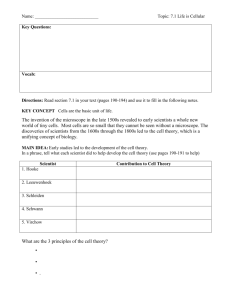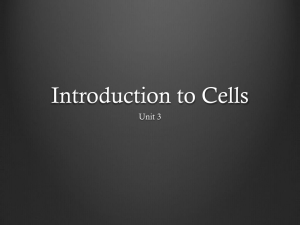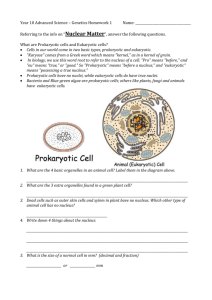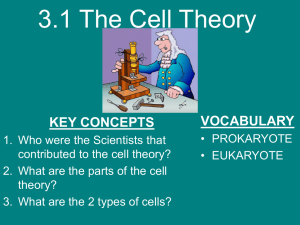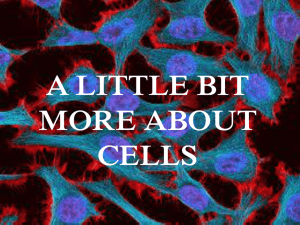Cell Theory and Cell Types Review
advertisement
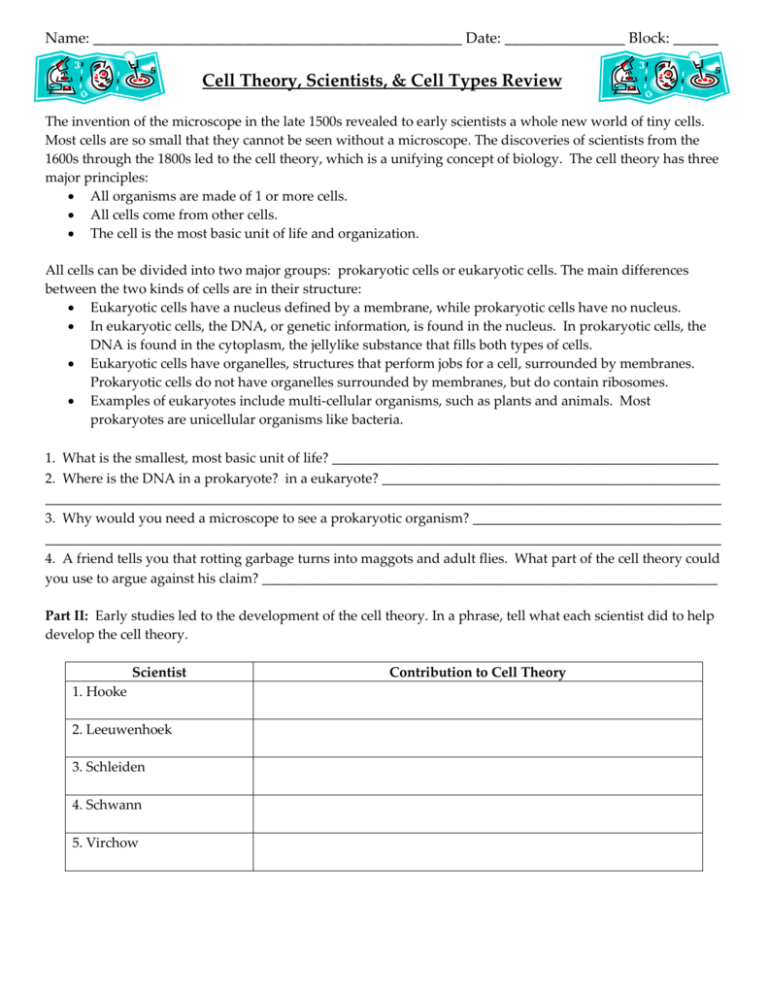
Name: _________________________________________________ Date: ________________ Block: ______ Cell Theory, Scientists, & Cell Types Review The invention of the microscope in the late 1500s revealed to early scientists a whole new world of tiny cells. Most cells are so small that they cannot be seen without a microscope. The discoveries of scientists from the 1600s through the 1800s led to the cell theory, which is a unifying concept of biology. The cell theory has three major principles: All organisms are made of 1 or more cells. All cells come from other cells. The cell is the most basic unit of life and organization. All cells can be divided into two major groups: prokaryotic cells or eukaryotic cells. The main differences between the two kinds of cells are in their structure: Eukaryotic cells have a nucleus defined by a membrane, while prokaryotic cells have no nucleus. In eukaryotic cells, the DNA, or genetic information, is found in the nucleus. In prokaryotic cells, the DNA is found in the cytoplasm, the jellylike substance that fills both types of cells. Eukaryotic cells have organelles, structures that perform jobs for a cell, surrounded by membranes. Prokaryotic cells do not have organelles surrounded by membranes, but do contain ribosomes. Examples of eukaryotes include multi-cellular organisms, such as plants and animals. Most prokaryotes are unicellular organisms like bacteria. 1. What is the smallest, most basic unit of life? ________________________________________________________ 2. Where is the DNA in a prokaryote? in a eukaryote? _________________________________________________ __________________________________________________________________________________________________ 3. Why would you need a microscope to see a prokaryotic organism? ____________________________________ __________________________________________________________________________________________________ 4. A friend tells you that rotting garbage turns into maggots and adult flies. What part of the cell theory could you use to argue against his claim? __________________________________________________________________ Part II: Early studies led to the development of the cell theory. In a phrase, tell what each scientist did to help develop the cell theory. Scientist 1. Hooke 2. Leeuwenhoek 3. Schleiden 4. Schwann 5. Virchow Contribution to Cell Theory 6. What are the three parts of the cell theory? 1. _________________________________________________________________________________________ 2. _________________________________________________________________________________________ 3. _________________________________________________________________________________________ Part III: Prokaryotic cells lack a nucleus and most internal structures of eukaryotic cells. In the top left side of the Y shape below, write the characteristics of eukaryotic cells. In the top right side of the Y shape below, write the characteristics of prokaryotic cells. At the bottom of the Y shape below, write the characteristics that both kinds of cells have in common.


